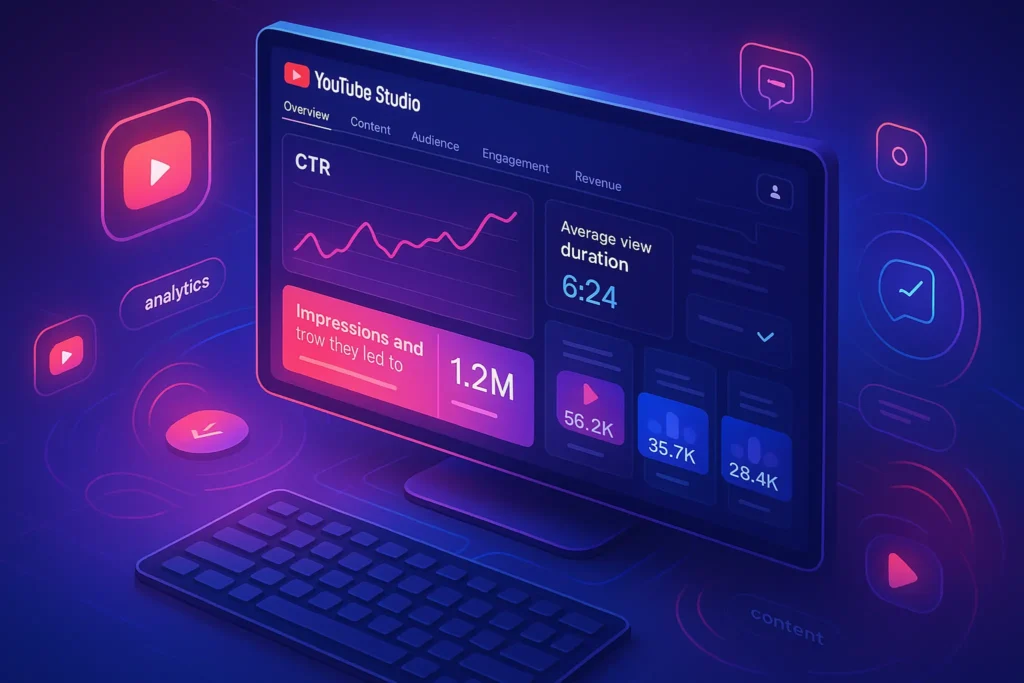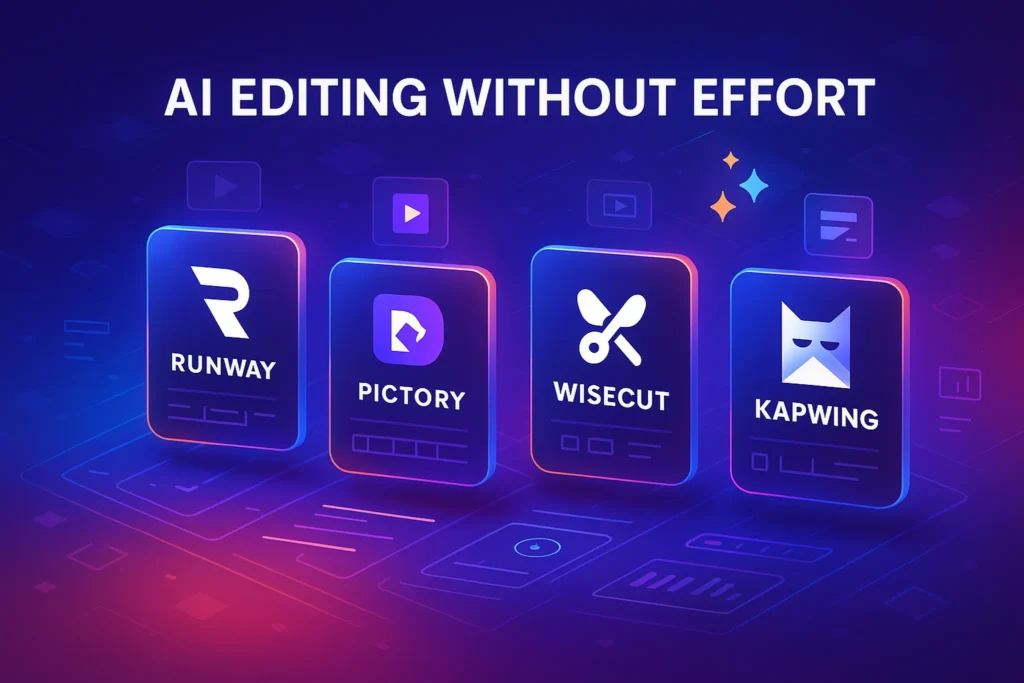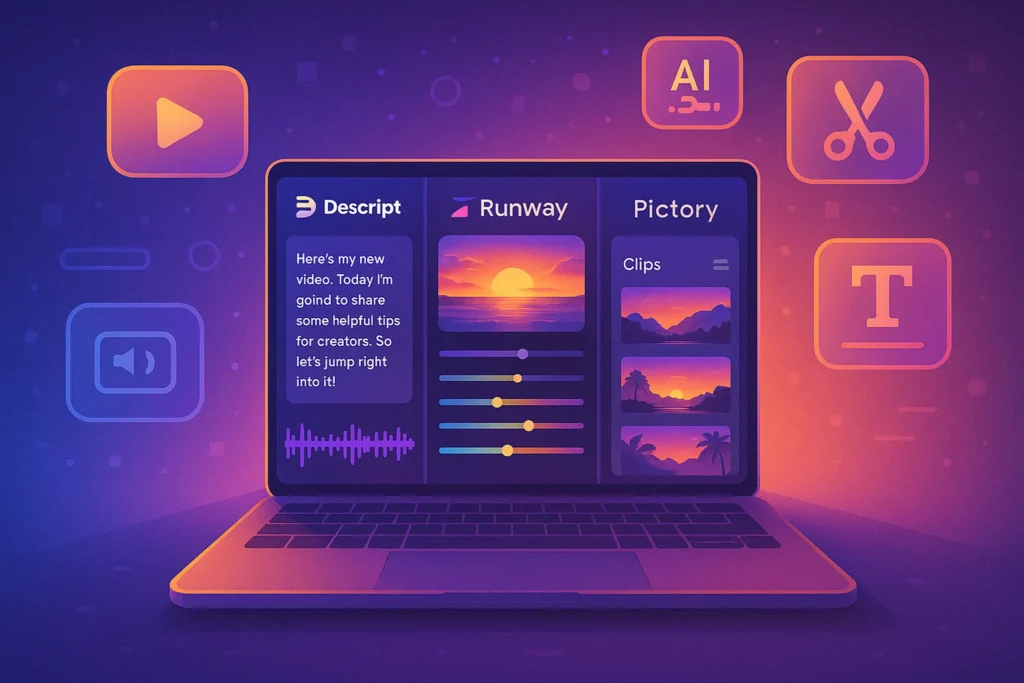Why Understanding YouTube Data Isn’t Optional Anymore
So, you’re publishing YouTube videos consistently. You’ve optimized your titles, your thumbnails are on point, and your content is genuinely helpful. But… growth is still slow.
Here’s the missing link: you’re not reading the data.
YouTube Studio is more than just a dashboard—it’s your strategy command center. Every creator serious about growth must learn to navigate and interpret its metrics. Why? Because the platform rewards performance, not just effort.
By understanding how your audience behaves—when they click, when they bounce, when they stay—you unlock the ability to:
-
Double down on what works
-
Cut what’s dragging you down
-
Make smart, data-backed content decisions
In short, YouTube Analytics is the most honest feedback loop you’ll ever get as a creator. Learn to use it, and you’ll grow.
📌 Related read: If you haven’t mastered the content side yet, check out How to Script Your Videos for Maximum Engagement for actionable structure tips that go hand-in-hand with analytics.
📊 1. Why YouTube Analytics Matter
It’s not just about vanity metrics or checking if you “did well.” Real analytics fuel strategic growth. Here’s why they matter:
-
Reveal what actually keeps people watching
Not every view is equal. Some videos retain 70% of viewers; others lose them in 15 seconds. Analytics shows you which is which—and why. -
Help decode the YouTube algorithm
CTR + Watch Time = Visibility. Understanding how these numbers interact helps you reverse-engineer performance. -
Spot trends and make decisions
Which topics attract more viewers? Which videos bring in new subscribers? What kind of thumbnails actually drive clicks? -
Turn your channel from hobby to system
If you’re serious about monetization, you need to treat your channel like a content business—with KPIs and iteration based on data.
📈 This post is your guide to the metrics that matter—and how to make them work for you.
📊 Want to Grow Your YouTube Channel Smarter?
Don’t just post and hope. Use YouTube Analytics to decode what works, what doesn’t, and what needs fixing. Explore our full Video Marketing hub packed with creator-tested strategies.
📺 Explore the Video Marketing Hub
🧠 Trusted by NerdChips creators for smarter YouTube growth
📈 2. Key Metrics Explained
YouTube bombards you with numbers. But not all metrics are created equal.
Let’s break down the most important ones—and what they actually mean for your channel’s growth.
🎯 Click-Through Rate (CTR)
What it is: The percentage of people who clicked your video after seeing its thumbnail/title.
Why it matters: A high CTR means your thumbnail + title combo is compelling.
But here’s the trick: High CTR with low watch time = bad signal (clickbait alert).
✅ Aim for: 4%–10% CTR
📉 Below 2%? Rethink your thumbnail and title strategy.
👀 Impressions vs. Views
-
Impressions = how often YouTube showed your video thumbnail to users.
-
Views = how often someone clicked and started watching.
Key insight: If impressions are high but views are low, you’ve got visibility—but weak appeal.
Use this combo to test:
“Is the problem discovery (low impressions) or decision (low CTR)?”
⏱️ Average View Duration
What it is: The average amount of time people spend watching your video.
Why it matters: This tells YouTube how engaging your content is.
The longer people stay, the more YouTube pushes it.
📌 Pro Tip: Compare this across similar videos to see what topics or formats hook people better.
📊 Audience Retention Graphs
This is where things get powerful.
-
Shows second-by-second viewer drop-off.
-
Identifies where people lose interest or rewind (watch again).
Use it to:
-
Spot boring intros, awkward transitions, or long tangents.
-
Pinpoint moments worth turning into Shorts or Highlights.
🎯 Don’t guess what’s boring—let the data tell you.
🌐 Traffic Sources
Where are your views coming from?
-
Browse Features = YouTube Homepage
-
Suggested Videos = Next to/after other videos
-
Search = People finding you organically
-
External = Social media, blogs, embedded players
Knowing this helps you:
-
Double down on SEO if search is strong.
-
Improve thumbnails if suggested is weak.
-
Track outside promotion efforts.
👤 Unique Viewers & Returning Viewers
-
Unique Viewers = how many individuals saw your content in a time period.
-
Returning Viewers = how many came back to watch again.
💡 Channels that grow steadily don’t just go viral—they build a returning audience.
This metric is the closest thing to loyalty you’ll get from YouTube.
📎 If you’re new to creating videos, be sure to check out our guide: Top 10 Affordable Cameras for Vlogging to get your setup dialed in.
🎯 Get the YouTube Analytics Pro Kit
Want to grow your channel with data-driven insights? Download our free Pro Kit to analyze CTR, Watch Time, and Retention like a strategist—not a guesser. Includes a glossary, growth tracker, and realistic benchmarks by channel size.
💡 Trusted by 500+ creators for smarter growth planning
🔍 3. How to Use These Metrics to Grow Smarter
Looking at your analytics is one thing. Using them to grow strategically is what separates serious creators from hobbyists. Let’s walk through how to turn data into decisions:
✅ Identify What’s Already Working
Start in YouTube Studio → Content Tab → sort by:
-
Views
-
Watch Time
-
Average View Duration
Look for videos that perform well across all three.
Then ask:
-
What topic was it?
-
What was the title & thumbnail format?
-
Was it short or long-form?
-
Was there a pattern to the intro or hook?
These winning videos are your content blueprint.
Double down on what works.
📉 Find Drop-Off Points — and Fix Them
Open your Audience Retention Graph for each video:
-
Where do viewers bounce?
-
Where do they rewind or spike?
What to look for:
-
Slow or off-topic intros
-
Long rants with no visual cues
-
Dead space or low energy
Now act on it:
-
Trim weak intros
-
Add pattern interrupts (B-roll, graphics, questions)
-
Hook the viewer within the first 5 seconds
🎯 Pro Tip: Use these insights to script your next videos more intentionally. Check out our video scripting guide if you need a framework.
🧪 A/B Test Your Titles and Thumbnails
High CTR = more views. But the only way to improve CTR is through testing.
Use:
-
TubeBuddy or vidIQ for A/B thumbnail tests
-
Manual swaps inside YouTube Studio
-
Track CTR changes over 48–72 hours
Even small changes (word choice, color, close-up vs. wide shot) can double CTR.
🎯 Let the Data Choose Your Next Topic
Ask:
-
What video earned the most subscribers?
-
Which topics got the highest retention?
-
Which got the most clicks from YouTube Search?
Look at Traffic Sources → “YouTube Search” and “Suggested”
Then build new videos based on high-performing keywords or themes.
📌 Let your audience’s behavior—not your gut—guide what you create next
In short: YouTube isn’t guessing. You shouldn’t be either.
Analytics give you a roadmap for growth—if you’re willing to follow it.
🛠️ 4. Tools & Pro Tips to Boost Your YouTube Analytics Game
Data is only as powerful as the systems you use to track and apply it. These tools and techniques will help you go beyond basic analytics and truly master your YouTube strategy.
🔧 Use Tools Like TubeBuddy and vidIQ
Both tools integrate directly with your YouTube dashboard and offer:
-
Real-time SEO scores for your videos
-
CTR benchmarking against similar channels
-
A/B testing for thumbnails and titles
-
Tag optimization and search trends
💡 vidIQ is great for data nerds.
💡 TubeBuddy excels in optimization workflows and productivity.
📊 Activate Advanced Mode in YouTube Studio
The “Advanced Mode” button in the Analytics tab unlocks:
-
Multi-video comparisons side by side
-
Custom date ranges for growth tracking
-
Segmented traffic breakdown (by device, geography, more)
Use this to spot patterns that the basic view hides.
📉 Build Your Own Performance Benchmarks
Don’t just rely on averages from other creators.
Instead:
-
Track the first 24h performance of each upload
-
Note down key metrics like CTR, View Duration, Impressions
-
After 5–10 uploads, you’ll start to see your personal baseline
This helps you predict early on whether a video will perform—or needs a title/thumbnail tweak.
🔄 Monitor Post-Upload Momentum
-
Videos often gain or lose traction in the first 48–72 hours
-
Schedule a check-in to see:
-
Is CTR rising or falling?
-
Are impressions growing (indicating algorithm pickup)?
-
Where are drop-offs happening?
-
📌 Don’t be afraid to update thumbnails or titles after publishing.
YouTube encourages iteration, not perfection.
🧭 Set Goals and Review Regularly
Every 30 days, review your top-performing videos and ask:
-
What kind of value did they deliver?
-
Were they search-driven or recommendation-driven?
-
Which ones got the most returning viewers or subscribers?
Use this to refine your content mix and keep momentum going.
✅ Need help with content direction too? Don’t miss How to Rank Your Videos — packed with keyword targeting tips for 2025’s YouTube algorithm.
📊 5. YouTube Analytics Pro Guide
📘 Mini Glossary of YouTube Metrics
Understanding key YouTube metrics is the foundation of data-driven content strategy. Here’s a quick glossary:
-
CTR (Click-Through Rate): The percentage of viewers who clicked your video after seeing the thumbnail. It reflects how appealing your title and thumbnail are.
-
Impressions: The number of times your video appeared on someone’s screen (e.g., in home feed, suggested videos).
-
Views: The actual number of times people clicked and watched your video.
-
Average View Duration: The average amount of time viewers watched your video. A higher value often signals good content.
-
Audience Retention: Visualized in graphs—shows at which points viewers drop off or stay engaged.
-
Unique Viewers: An estimate of how many distinct people watched your videos over a time period.
-
Returning Viewers: A great signal of channel loyalty; tells you how many people came back to watch more.
📊 YouTube Growth Tracker (Excel Tool)
Tracking weekly performance is one of the most powerful habits top creators adopt. That’s why we created a simple yet powerful Excel sheet you can use to:
-
Track core metrics like CTR, Watch Time, Retention, Subscriber Growth
-
Log your video topics, thumbnails, titles, and their performance
-
Spot patterns to double down on what’s working
-
Use your own data as a benchmark over time
🟢 Want the tracker? Download it below or get it via email as part of our Creator Strategy Kit.
📈 Benchmark Table by Channel Size
Not all channels perform the same. Here’s a realistic table to understand how your metrics compare based on your channel size:
| Channel Size | CTR Goal | Avg View Duration | Retention Goal |
|---|---|---|---|
| < 1K Subs | 3–6% | 30–50 sec | 35–45% |
| 1K – 10K Subs | 4–8% | 1–2 min | 45–55% |
| 10K+ Subs | 6–12% | 3–4+ min | 55–70% |
✅ Use this table as a north star, not a hard rule. Your niche, audience, and format also impact the numbers.
⚠️ Analytics Trap Warning
WARNING: Don’t fall into the Analytics Trap.
Too many creators obsess over numbers but never use them to take action. If you look at CTR or retention without testing changes or improving your content strategy, your analytics are just vanity data.
✅ The key is action:
Turn every insight into a small experiment.
→ Try a new thumbnail format.
→ Cut weak intros.
→ Test topic hooks.
→ Compare performance across content types.
🧠 Nerd Verdict
YouTube is no longer just a creative platform—it’s a competitive data game.
If you’re serious about growing your channel in 2025, you can’t afford to ignore analytics.
Instead of blindly publishing and hoping it works, your new workflow should look like this:
-
Publish
-
Track performance
-
Analyze key metrics
-
Iterate based on insights
That’s how successful creators think—and scale.
The good news?
You don’t need to be a data scientist. You just need to know what to look for.
And now, you do.
❓ FAQ: Nerds Ask, We Answer
💬 Would You Bite?
What’s the #1 insight you’ve gained from your YouTube analytics recently?
Drop it in the comments—we’re building a hub of real creator wisdom.👇



